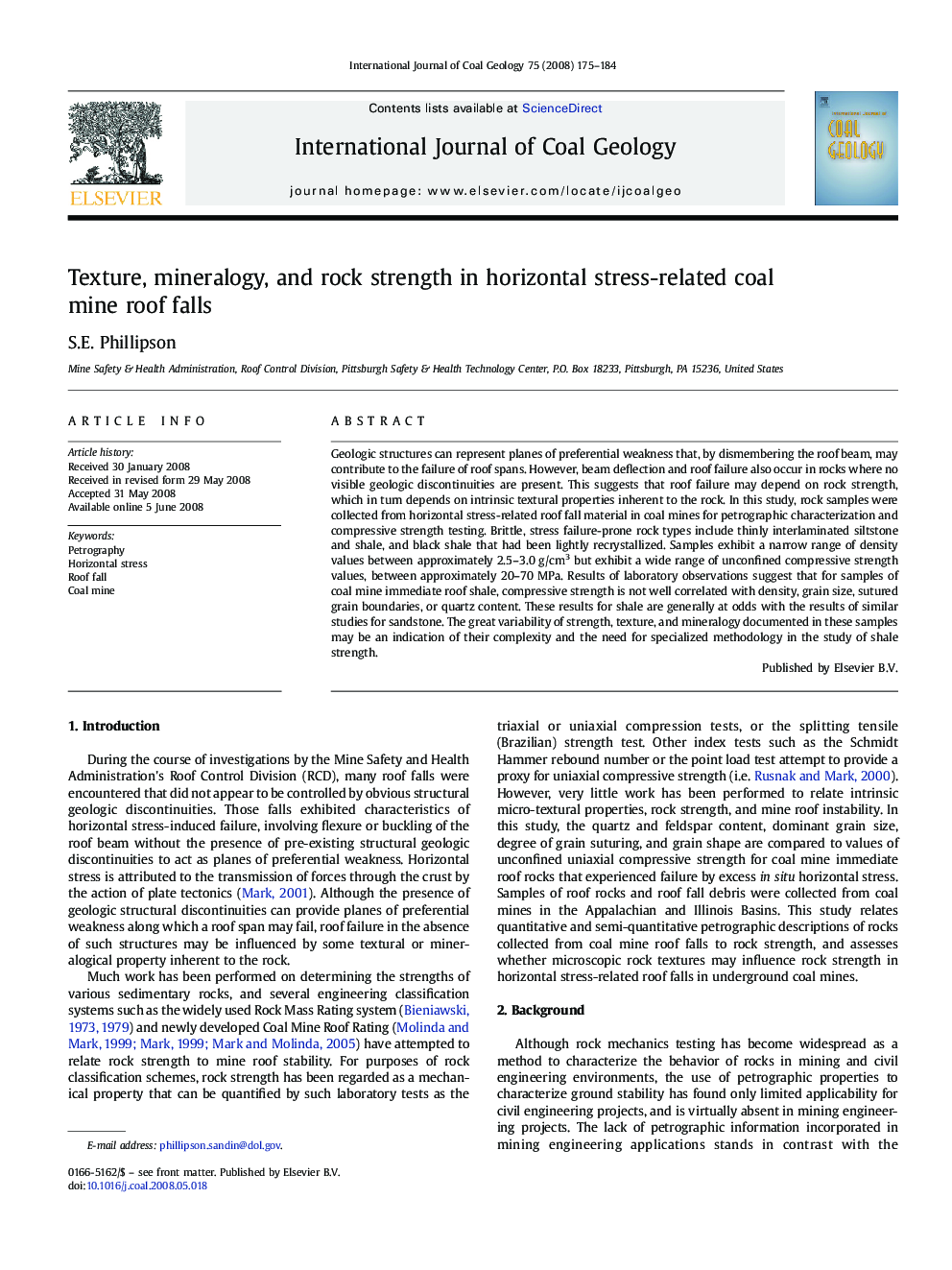| Article ID | Journal | Published Year | Pages | File Type |
|---|---|---|---|---|
| 1754077 | International Journal of Coal Geology | 2008 | 10 Pages |
Geologic structures can represent planes of preferential weakness that, by dismembering the roof beam, may contribute to the failure of roof spans. However, beam deflection and roof failure also occur in rocks where no visible geologic discontinuities are present. This suggests that roof failure may depend on rock strength, which in turn depends on intrinsic textural properties inherent to the rock. In this study, rock samples were collected from horizontal stress-related roof fall material in coal mines for petrographic characterization and compressive strength testing. Brittle, stress failure-prone rock types include thinly interlaminated siltstone and shale, and black shale that had been lightly recrystallized. Samples exhibit a narrow range of density values between approximately 2.5–3.0 g/cm3 but exhibit a wide range of unconfined compressive strength values, between approximately 20–70 MPa. Results of laboratory observations suggest that for samples of coal mine immediate roof shale, compressive strength is not well correlated with density, grain size, sutured grain boundaries, or quartz content. These results for shale are generally at odds with the results of similar studies for sandstone. The great variability of strength, texture, and mineralogy documented in these samples may be an indication of their complexity and the need for specialized methodology in the study of shale strength.
